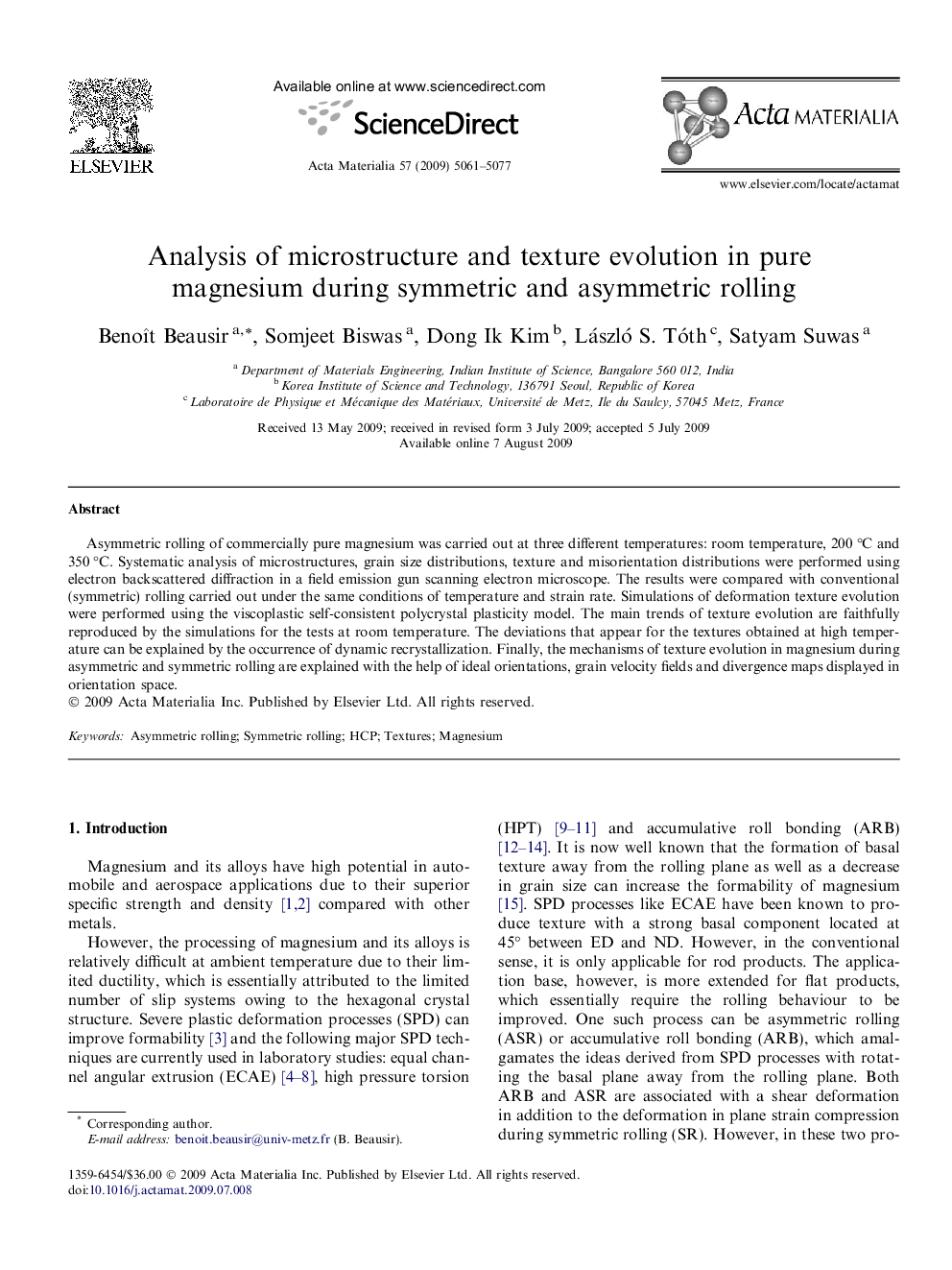| Article ID | Journal | Published Year | Pages | File Type |
|---|---|---|---|---|
| 1449026 | Acta Materialia | 2009 | 17 Pages |
Asymmetric rolling of commercially pure magnesium was carried out at three different temperatures: room temperature, 200 °C and 350 °C. Systematic analysis of microstructures, grain size distributions, texture and misorientation distributions were performed using electron backscattered diffraction in a field emission gun scanning electron microscope. The results were compared with conventional (symmetric) rolling carried out under the same conditions of temperature and strain rate. Simulations of deformation texture evolution were performed using the viscoplastic self-consistent polycrystal plasticity model. The main trends of texture evolution are faithfully reproduced by the simulations for the tests at room temperature. The deviations that appear for the textures obtained at high temperature can be explained by the occurrence of dynamic recrystallization. Finally, the mechanisms of texture evolution in magnesium during asymmetric and symmetric rolling are explained with the help of ideal orientations, grain velocity fields and divergence maps displayed in orientation space.
